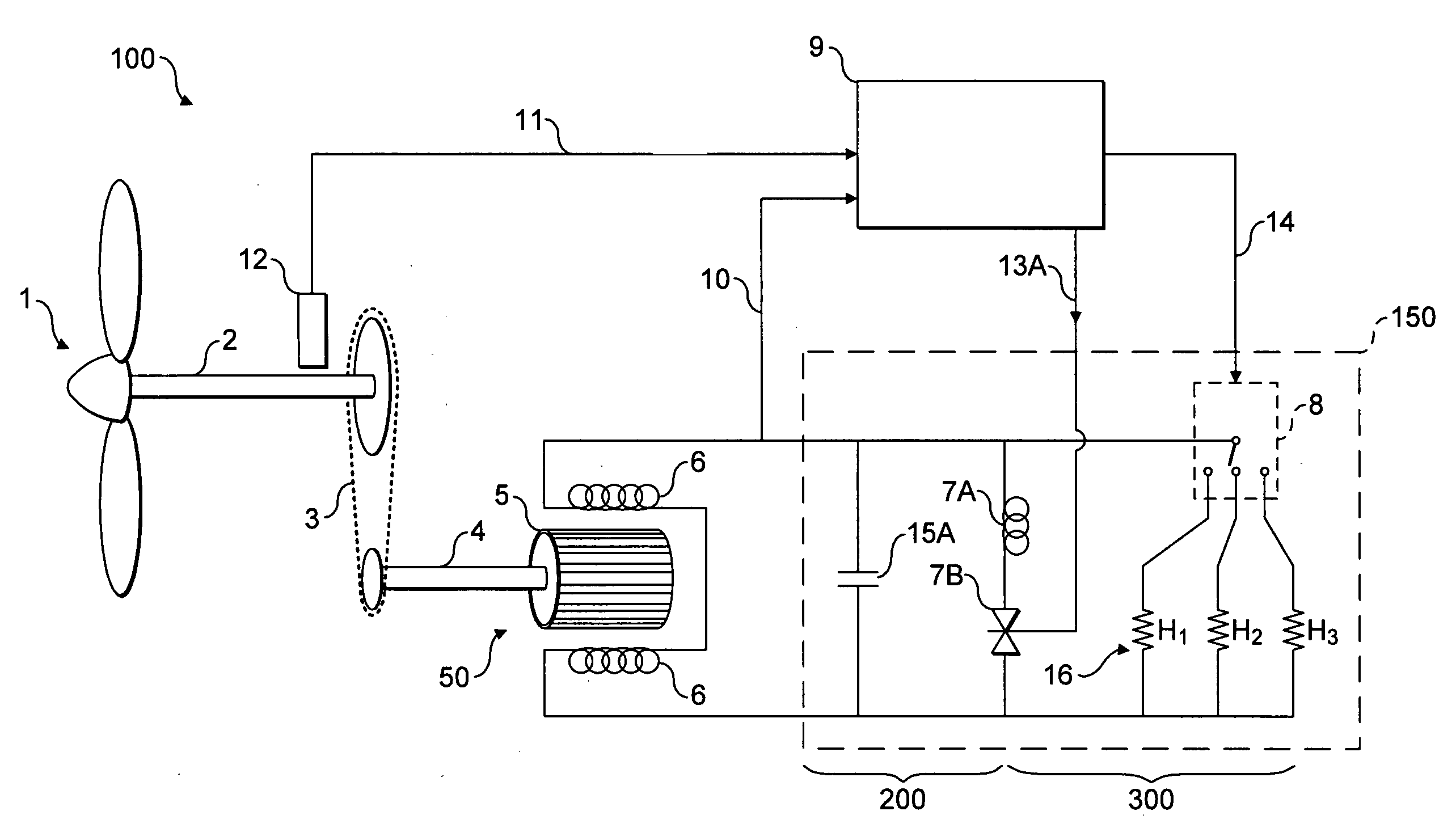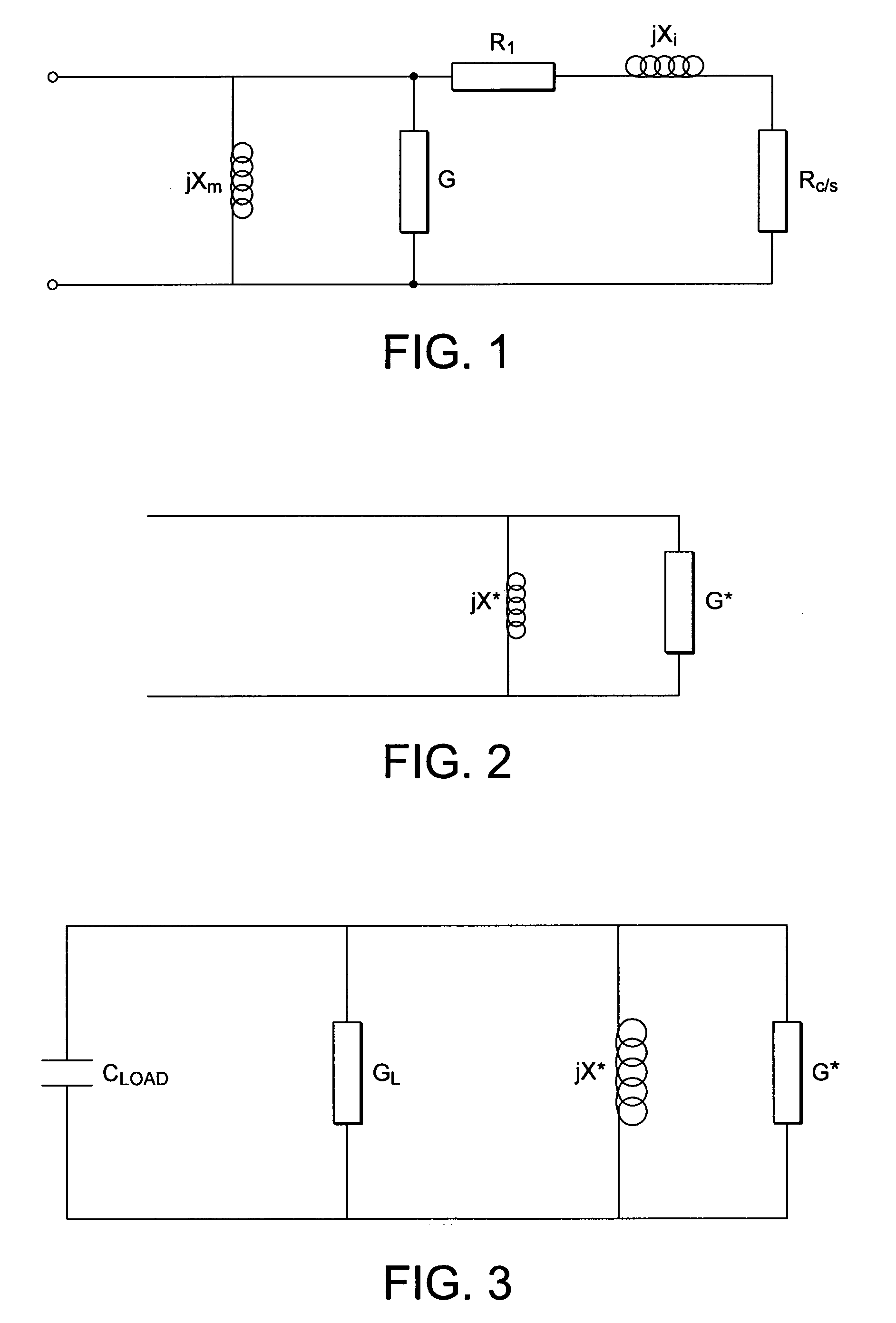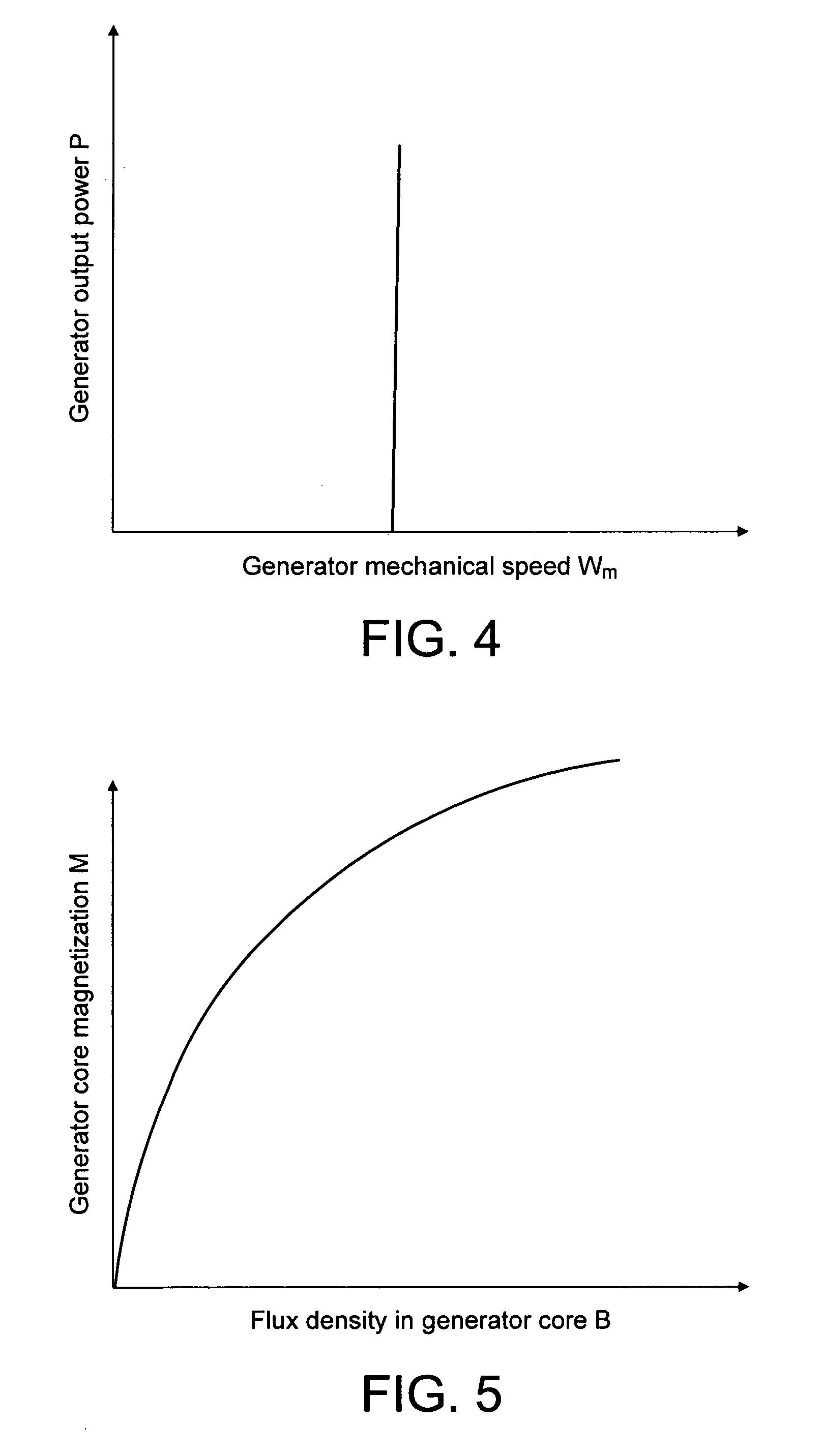Electricity generator
a technology of electric generators and generators, applied in the direction of electric generator control, machine/engine, etc., can solve the problems of inability to meet the requirements of voltage and frequency control, one or more limitations of introduction, cost, complexity, efficiency and reliability, etc., and achieve the effect of minimal cost and difficult reliably control
- Summary
- Abstract
- Description
- Claims
- Application Information
AI Technical Summary
Benefits of technology
Problems solved by technology
Method used
Image
Examples
Embodiment Construction
[0041]Before describing a preferred implementation of the present invention, a brief review of the theoretical principles of induction generators (and in particular, self excited induction generators) is appropriate, since this will assist in an understanding of the particular approach taken—specifically, the reasons why it is beneficial, in the present application, to set aside the requirement to control voltage, frequency and / or prime mover torque.
Ideal Induction Generator
[0042]FIG. 1 shows an equivalent circuit for one of the phases of an induction generator. jXm is the impedance of the stator winding, G represents the iron losses, Rl represents the stator copper losses, jXl represents the imperfect coupling between the stator and rotor and Rc / s represents the squirrel-cage impedance where the value of the slip, s, is negative for generation and hence so is the value of the cage impedance. The values of Xl and Xm are, of course, frequency dependent.
[0043]At particular values of f...
PUM
 Login to View More
Login to View More Abstract
Description
Claims
Application Information
 Login to View More
Login to View More - R&D
- Intellectual Property
- Life Sciences
- Materials
- Tech Scout
- Unparalleled Data Quality
- Higher Quality Content
- 60% Fewer Hallucinations
Browse by: Latest US Patents, China's latest patents, Technical Efficacy Thesaurus, Application Domain, Technology Topic, Popular Technical Reports.
© 2025 PatSnap. All rights reserved.Legal|Privacy policy|Modern Slavery Act Transparency Statement|Sitemap|About US| Contact US: help@patsnap.com



